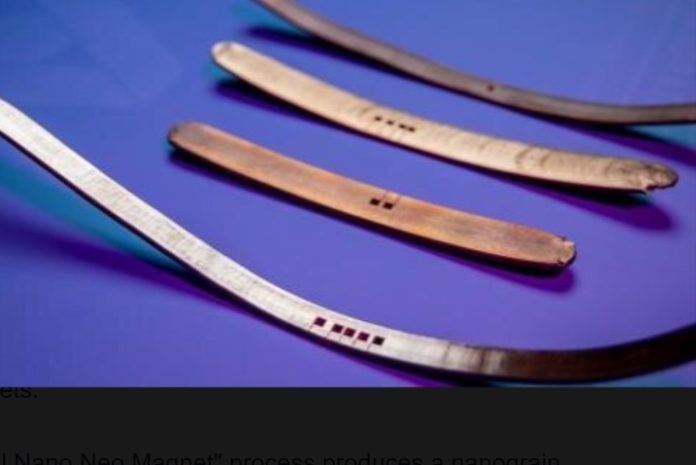
Science can sometimes feel like magic, and that’s certainly the case with the latest breakthrough from the Critical Materials Institute, which is under the wing of the U.S. Department of Energy and led by the Ames National Laboratory.
Researchers there have invented a smarter way to make powerful permanent magnets!
If you’ve ever played with fridge magnets, you’ve interacted with permanent magnets. But these magnets are much more than toys.
They’re a vital component in many technologies we use daily, from cell phones and electric cars to massive wind turbines.
A specific type of magnet, known as the neodymium iron boron (or Neo for short) permanent magnet, is of great importance.
But it comes with a catch: when exposed to temperatures above 150°C (that’s 302°F, around the heat of an oven), these magnets begin to lose their magnetic properties.
Jun Cui, a scientist at Ames Lab, said that making magnets that can resist this high-temperature demagnetization is quite the challenge.
One way to make them more resistant is by adding dysprosium, a special element, to the Neo magnet.
However, dysprosium is hard to come by and in limited supply. Another way is to start with very tiny particles when making the magnet, much smaller than the thickness of a human hair.
Making a magnet is usually a two-step process. Tiny particles are first lined up using a magnetic field and then packed together tightly.
They are then fused into one solid piece through a process called sintering, which involves heating the material to super high temperatures.
After these steps, the magnets are still sensitive to air and can even catch fire if exposed, so they’re coated with a layer of nickel for protection.
Here’s where Cui and his team’s groundbreaking new method comes in. Instead of following these traditional steps, they pack these tiny particles into a stainless-steel tube and then heat and roll it.
That’s it! This process, aptly named the “Hot-roll Nano Neo Magnet” process, is simpler, safer, and much more efficient.
Why is this so cool? Well, for starters, this new process doesn’t need a special furnace to keep the air out because the steel tube does that job. Also, the magnets come out thinner but are still just as strong and robust.
They don’t need to be coated in nickel because they remain safe inside their steel casing. And best of all, it’s a continuous process, meaning they can produce lots of magnets in one go, which can then be cut into smaller pieces.
That makes it faster and cheaper than the old method.
So, there you have it – scientists have found a neat new way to make essential magnets for our everyday gadgets! It’s not magic, but it’s certainly magical.
Follow us on Twitter for more articles about this topic.



